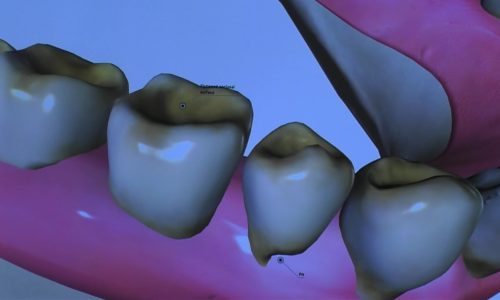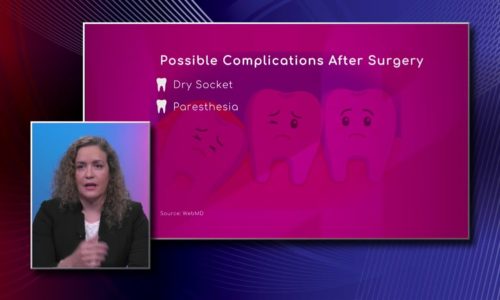How do I alleviate tooth pain at home? |

Just like other organs or structures in the body, the teeth are susceptible to injuries, infections, and defects. Knowing what do when one of these occurs can help minimize discomfort and improve the outcome. In some cases, this may even mean the difference in saving or losing a tooth. In the next two editions of “Health Tips” we’ll discuss a number of common tooth-related problems. The dental problems in Part 1 can usually be temporized until the dentist can be seen. Part 2 will deal with dental emergencies that require prompt evaluation by a dentist.
Toothache. The most common cause of toothache is a dental cavity. Other causes include food getting lodged between teeth, tooth grinding, and more seriously, a dental abscess. The first steps to take with a tooth ache are to rinse the mouth with warm water, gently floss between teeth to dislodge any trapped food particles, and take an over-the-counter pain medication, such as ibuprofen (Advil®) or acetaminophen (Tylenol®). If this is unsuccessful, there may be some benefit to the application of an over-the-counter oral anesthetic containing benzocaine (Anbesol, Orajel, Benzodent, others) or clove oil (eugenol). Clove oil is available in drugstores and in the spice section of some supermarkets. Aspirin or other oral pain relievers should not be placed against the teeth or gums since they have the potential to “burn” the gums. Persistent pain, such as that due to dental cavity, will require attention from the dentist. A dental abscess is a more serious problem that will be discussed in next week’s Health Tip.
Food or object caught between teeth. Popcorn hulls are notorious for getting stuck between the teeth or lodged in the gum. The best way to remove these or other objects caught between the teeth is with the use of dental floss. In most cases, gentle flossing will remove the stuck particle. The American Dental Association discourages the use of toothpick or other sharp objects for removing stick food or objects because of concerns regarding injury to the teeth or gums. It may be necessary to see the dentist if the object is unable to be removed with dental floss.
Lost crown. A dental crown (also known as a “cap”) is a prosthetic tooth that is placed over a damaged tooth to restore its shape and function. Commonly made of porcelain bonded to a metal shell, crowns are cemented onto the tooth after it has been prepared to accept the crown. Some of the reasons that a crown may loosen or come off include clenching or grinding teeth, inadequate tooth structure to hold the crown in place, or loss of adhesion from the cement. Losing a crown can be painful because with the crown gone, sensitive nerves within the tooth are more exposed. If so, applying a small amount of clove oil to the sensitive area with a cotton swab will help with pain relief. After losing a crown, the best option is to see the dentist as soon as possible to have it replaced. When this is not possible, the crown can be temporarily replaced using an over-the-counter dental adhesive. Recapit and Temparin are two of the commercially available products made for this purpose. The crown should be clean and dry before the adhesive is applied to its inside and slipped back onto the tooth. Superglue should never be used to temporarily replace a crown. Even if the temporary cement holds the crown in place, it is important to follow-up with the dentist for more permanent fixation of the crown.
Lost filling. A lost filling, like a lost crown can be painful because with the filling gone, nerves within the tooth are more exposed to the effects of temperature, pressure and air. Topical anesthetics, such as clove oil can offer temporary relief from the pain, but a better solution while awaiting dental attention is to use a temporary filling material. Options for this include sugarless gum or an over-the-counter temporary filling product. Dentemp, Temparin and Refilit are zinc-oxide based products that are commercially available for this purpose. After pressing this material into the hole left by the lost filling, it hardens to provide relief of pain and protection to the tooth. As with dental adhesives, these represent a temporary measure and the filling will need to be replaced by the dentist.
Broken braces and wires. Occasionally, an orthodontic wire can come loose from its bracket or band, uncomfortably poking the cheek, tongue or gum. Pushing the wire into a more comfortable position with the eraser end of a pencil may take care of the problem until return to the orthodontist’s office. If this doesn’t help, covering the end of the wire with a pea-sized piece of dental wax, available at most drug stores, should provide temporary relief. It is not advised to try to cut the wire yourself due to concerns of swallowing or aspirating the cut end of the wire.
Our clients are fortunate to be able to access expert dental information through our eDent service. For any questions you may have regarding dental issues feel free to contact our eDentist, Dr. Robert Tramel.
If you have any more questions just Ask Hanna, our health advisors are here to help.
Image: ©Shutterstock / Damir Khabirov








